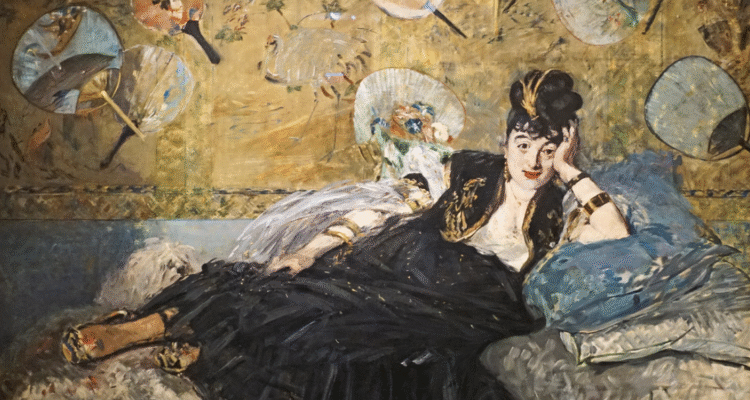The city that shaped the brushstrokes of the world.
To speak of Paris without speaking of art is to speak of the sky without mentioning light. Since the 18th century—and arguably long before—Paris has drawn artists like a magnet, offering them not just salons and studios, but a muse, a mirror, and a battleground for creative revolution. From the stone corridors of Montmartre to the smoky cafés of Saint-Germain, the City of Light has been home to some of the greatest masters in art history.
Here are the artists who lived, created, and transformed their vision of the world in Paris—and, in doing so, transformed Paris itself.
Pablo Picasso (1881–1973)
📍 Montmartre, then Montparnasse, finally Rue des Grands-Augustins
Spanish by birth, Parisian by spirit, Picasso arrived in 1900 and quickly immersed himself in the bohemian life of Montmartre’s Bateau-Lavoir. It was here that he painted Les Demoiselles d’Avignon—a moment that detonated modern art. From Cubism to his political masterpiece Guernica, Paris shaped his boldest periods, and he returned the favour by becoming its adopted son.
🖼 Where to go now: Musée Picasso in the Marais, housed in the Hôtel Salé—one of the finest collections of his work in the world.
Henri Matisse (1869–1954)
📍 Boulevard des Invalides, then Issy-les-Moulineaux
Though Matisse hailed from the north of France, it was in Paris that his palette exploded. He studied at the École des Beaux-Arts and shared a spirited rivalry with Picasso. His Paris years were filled with radical colour, bold linework, and Fauvist fire, and he kept returning to the city even after decamping to the Riviera.
🖼 Where to go now: Works at the Centre Pompidou and Musée de l’Orangerie. His old studio is not open to the public, but the spirit lingers on Rue de Sèvres.
Édouard Manet (1832–1883)
📍 Rue d’Amsterdam, then Rue de Saint-Pétersbourg
The father of modern painting, Manet was Paris through and through—a dandy, a rebel, a boulevardier. His provocative canvases—Olympia, Le Déjeuner sur l’herbe—caused scandal at the Paris Salon, but they also ushered in the era of Impressionism. He depicted the city not with nostalgia but with immediacy, as it looked and felt in real time.
🖼 Where to go now: Musée d’Orsay houses his greatest hits.
Claude Monet (1840–1926)
📍 Several studios across the Right Bank
Though best associated with Giverny, Monet’s early years unfolded in Paris’s studio apartments and Impressionist cafés. He exhibited in the first Impressionist Salon (1874) and captured the city in light: train stations, bridges, and fog-shrouded mornings.
🖼 Where to go now: Musée Marmottan Monet holds the largest Monet collection in the world.
Amedeo Modigliani (1884–1920)
📍 Cité Falguière, Montparnasse
Arriving from Italy, Modigliani found in Paris both a home and a tragic destiny. His elongated portraits and soulful eyes were born in Montparnasse, in studios soaked in wine, poetry, and poverty. His muse and lover, Jeanne Hébuterne, painted with him in their modest flat until their tragic end.
🖼 Where to go now: Works are scattered in the Centre Pompidou and private galleries. A plaque at 8 Rue de la Grande-Chaumière marks his studio.
Marc Chagall (1887–1985)
📍 Montparnasse and the Latin Quarter
For Chagall, Paris was both sanctuary and springboard. Arriving from Vitebsk in 1910, he absorbed Cubism, Symbolism, and Surrealism, but his art always retained the dreamlike mysticism of his Russian-Jewish roots. His works during the 1920s and 30s exploded with colour, folklore, and flying lovers, much of it conceived in his Paris studio.
🖼 Where to go now: Musée d’Art Moderne and the ceiling of the Opéra Garnier—his ethereal masterpiece.
Auguste Rodin (1840–1917)
📍 Rue de Varenne, Hôtel Biron
Paris was where Rodin revolutionized sculpture, bringing it emotion, movement, and psychological depth. His studio-turned-museum, once the Hôtel Biron, remains one of the most atmospheric art spaces in the city, filled with marble, bronze, and garden shadows.
🖼 Where to go now: Musée Rodin—one of Paris’s most poetic places.
Jean Dubuffet (1901–1985)
📍 Various ateliers across the Left Bank
A late bloomer, Dubuffet is the father of Art Brut, or “raw art.” He turned away from academicism and toward the unfiltered creativity of outsiders, prisoners, and children. His chaotic, graphic, and sometimes grotesque work challenged the Paris art establishment—and then redefined it.
🖼 Where to go now: Fondation Dubuffet (137 Rue de Sèvres, 6e)—his secret cave of wonders.
Berthe Morisot (1841–1895)
📍 Rue de Villejust, near Parc Monceau
A founding Impressionist and one of the few women at the core of the movement, Morisot’s light-drenched interiors and Parisian domestic scenes brought a quiet rebellion to the salon walls. Her brushstrokes captured femininity with force and nuance—subtle, but never secondary.
🖼 Where to go now: Musée Marmottan, alongside Monet, and occasional showings at Musée d’Orsay.
Toulouse-Lautrec (1864–1901)
📍 Montmartre
Henri de Toulouse-Lautrec chronicled the cabarets, courtesans, and characters of Belle Époque Paris with unmatched intimacy. His flat near the Moulin Rouge was both atelier and afterparty. In his hands, the nightlife of Montmartre became modern mythology.
🖼 Where to go now: Musée d’Orsay and themed walking tours in Montmartre
Bonus Mentions:
-
Delacroix – Studio at Place Furstenberg (now a museum). Romanticism incarnate.
-
Joan Miró – Spent his formative surrealist years in Paris’s Left Bank ateliers.
-
Man Ray – Made Montparnasse his playground for Dada and Surrealist photography.
-
Alberto Giacometti – Lived and sculpted in a studio the size of a storage closet at 46 Rue Hippolyte-Maindron, 14e. His ghosts still wander Montparnasse.
Final Word from The Socialites:
They came for the light, stayed for the chaos, and left pieces of themselves in the streets, cafés, and studios of Paris. These masters didn’t just live in Paris. They painted it into legend.
If you really want to know this city—follow their brushstrokes.
—The Socialites


